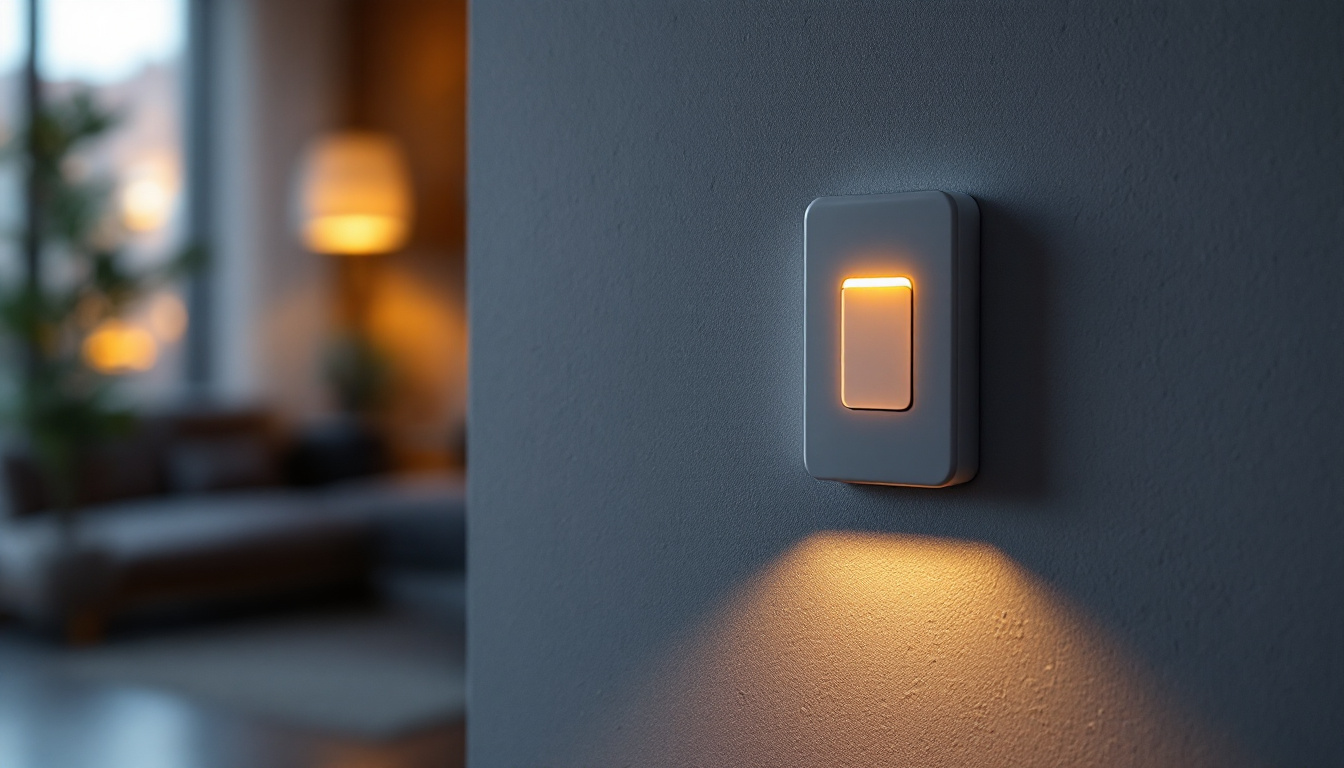
emergency lighting: How it Impacts Lighting Contractors’ Projects
In the world of lighting design and installation, emergency lighting serves a critical role that extends beyond mere aesthetics. It is a vital component of safety and compliance in various settings, from commercial buildings to residential complexes. For lighting contractors, understanding the intricacies of emergency lighting can significantly impact project outcomes, client satisfaction, and overall business success. This article delves into the importance of emergency lighting, its regulatory requirements, and how it influences the workflow of lighting contractors.
Emergency lighting is designed to illuminate areas during power outages or emergencies, ensuring safe egress and helping to prevent accidents. This type of lighting is not merely an afterthought; it is a fundamental aspect of building safety protocols. Understanding its importance can help lighting contractors deliver comprehensive solutions that meet both client needs and regulatory standards.
One of the primary reasons emergency lighting is essential is safety. In the event of an emergency, such as a fire or natural disaster, adequate lighting can mean the difference between a safe evacuation and chaos. Lighting contractors must be well-versed in local and national codes that govern emergency lighting installation. Compliance with these regulations not only protects occupants but also shields contractors from potential legal liabilities.
Moreover, building codes often require specific types of emergency lighting systems, such as battery-operated lights or LED fixtures. Familiarity with these requirements allows contractors to design systems that are not only compliant but also efficient and effective. For instance, LED emergency lights are not only energy-efficient but also have a longer lifespan compared to traditional incandescent bulbs, making them a smart choice for both sustainability and cost-effectiveness. Additionally, the integration of smart technology in emergency lighting systems can provide real-time monitoring and alerts, further enhancing safety measures within a building.
By prioritizing emergency lighting in their projects, contractors can enhance their reputation and foster trust with clients. Clients are more likely to choose contractors who demonstrate a thorough understanding of safety features and compliance standards. This trust can lead to repeat business and referrals, crucial for long-term success in the industry.
Furthermore, educating clients about the benefits of emergency lighting can significantly strengthen the contractor-client relationship. By explaining how well-designed emergency lighting systems can not only save lives but also reduce potential property damage, contractors position themselves as knowledgeable partners in safety. This proactive approach can also open doors to additional services, such as routine maintenance checks and upgrades, ensuring that emergency systems remain functional and compliant over time. Ultimately, a contractor’s commitment to safety and quality can set them apart in a competitive market, leading to a more robust business model.
Emergency lighting systems come in various forms, each serving specific needs and environments. Understanding these types can help contractors select the most appropriate solutions for their projects.
Battery-operated emergency lights are among the most common types of emergency lighting. They are designed to automatically activate during power outages, providing immediate illumination. These lights can be installed in hallways, stairwells, and other critical areas to guide occupants safely to exits.
For contractors, the installation of battery-operated systems requires careful planning. Placement is crucial to ensure that light coverage is adequate and that the fixtures are easily accessible for maintenance. Additionally, contractors must consider the lifespan of the batteries and the ease of replacement to maintain functionality over time.
exit signs are another vital component of emergency lighting. These signs guide occupants toward exits during emergencies, making their visibility and placement critical. Contractors must ensure that exit signs comply with local regulations regarding size, illumination, and placement.
Incorporating photoluminescent exit signs can be an innovative solution, as they do not rely on electrical power and can provide guidance even during complete power failures. Lighting contractors should explore such options to enhance safety and efficiency in their projects.
Understanding the regulatory landscape surrounding emergency lighting is crucial for lighting contractors. Various codes and standards dictate how emergency lighting systems should be designed, installed, and maintained.
The NFPA provides comprehensive guidelines regarding emergency lighting systems. These guidelines cover various aspects, including installation, maintenance, and testing of emergency lighting. Contractors must familiarize themselves with these standards to ensure compliance and safety in their projects.
In addition to NFPA guidelines, contractors should also be aware of local amendments to these codes, as they can vary significantly from one jurisdiction to another. Staying updated on these regulations is essential to avoid potential penalties and ensure the safety of building occupants.
Local building codes often include specific requirements for emergency lighting systems. These codes may dictate the minimum illumination levels, the types of fixtures permitted, and the required testing and maintenance schedules. Lighting contractors must work closely with local authorities to ensure that all installations meet these standards.
Moreover, understanding the nuances of local regulations can give contractors a competitive edge. By offering solutions that not only meet but exceed regulatory requirements, contractors can position themselves as industry leaders in safety and compliance.
Designing an effective emergency lighting system involves more than just selecting fixtures. Several factors must be considered to ensure that the system functions optimally during emergencies.
One of the key design considerations is the required illumination levels. Emergency lighting must provide sufficient brightness to allow for safe egress without causing glare or confusion. Contractors should conduct thorough assessments of the spaces they are working in to determine the appropriate lighting levels and coverage areas.
Additionally, the layout of the space plays a significant role in determining fixture placement. Areas with high foot traffic, such as hallways and staircases, require more focused lighting to guide occupants safely. Contractors should also consider the potential for obstructions that could impede light distribution.
Integrating emergency lighting with other building systems can enhance overall safety and efficiency. For instance, linking emergency lighting to fire alarm systems can ensure that lights activate automatically during emergencies. This integration requires careful planning and coordination with other contractors involved in the project.
Moreover, smart technology can be utilized to monitor emergency lighting systems in real-time. This allows for proactive maintenance and ensures that systems are always operational when needed. Contractors who embrace such technologies can offer clients innovative solutions that enhance safety and reliability.
While the importance of emergency lighting is clear, the installation process can present several challenges for lighting contractors. Understanding these challenges can help contractors develop strategies to overcome them.
In many cases, lighting contractors are tasked with retrofitting emergency lighting systems into existing buildings. This can pose significant challenges, particularly in older structures where the electrical infrastructure may not support modern lighting technologies. Contractors must assess the existing wiring and power supply to determine the feasibility of installation.
In some instances, it may be necessary to upgrade the electrical system to accommodate new emergency lighting fixtures. This can add complexity to the project and may require additional permits or inspections, impacting timelines and budgets.
Budget constraints can also pose challenges in emergency lighting projects. Clients may prioritize aesthetics or other features over safety measures, leading to potential compromises in the emergency lighting design. Lighting contractors must effectively communicate the importance of adequate emergency lighting to clients and help them understand the long-term benefits of investing in safety.
Providing detailed cost breakdowns and outlining the potential risks associated with inadequate emergency lighting can help clients make informed decisions. By positioning emergency lighting as a critical investment rather than an optional expense, contractors can encourage clients to allocate appropriate budgets for these systems.
The field of emergency lighting is evolving, with new technologies and trends emerging that can impact how lighting contractors approach their projects. Staying informed about these trends can help contractors remain competitive and provide cutting-edge solutions to their clients.
Smart emergency lighting systems are gaining traction in the industry. These systems utilize IoT technology to monitor lighting conditions and operational status in real-time. Contractors can leverage this technology to provide clients with enhanced control and visibility over their emergency lighting systems.
For instance, smart systems can send alerts when a fixture is malfunctioning or when batteries need replacement. This proactive approach to maintenance can significantly improve the reliability of emergency lighting systems, ensuring that they are always ready when needed.
As sustainability becomes a priority for many clients, energy-efficient emergency lighting solutions are increasingly in demand. LED technology has revolutionized emergency lighting, offering longer lifespans and lower energy consumption compared to traditional incandescent bulbs.
Contractors should explore energy-efficient options and educate clients about the benefits of these systems. Not only do they reduce operational costs, but they also contribute to a more sustainable environment, aligning with the values of many modern businesses.
Emergency lighting is an essential aspect of lighting design that significantly impacts the safety and compliance of any project. For lighting contractors, understanding the importance of emergency lighting, the regulatory landscape, and the various types of systems available is crucial for delivering successful projects. By prioritizing safety and staying informed about emerging trends, contractors can enhance their reputation, foster client trust, and ultimately contribute to safer built environments.
As the industry continues to evolve, embracing innovative technologies and sustainable practices will be key to staying competitive. Lighting contractors who recognize the critical role of emergency lighting will not only meet client expectations but also play a vital role in ensuring the safety and well-being of building occupants.
Ready to elevate your emergency lighting solutions? At LumenWholesale, we provide lighting contractors with the highest quality, spec-grade emergency lighting products at unbeatable wholesale prices. Say goodbye to local distributor markups and hello to our extensive selection that meets the highest industry standards. With free shipping on bulk orders, you can ensure your projects are equipped with reliable, high-performance lighting that guarantees safety and compliance. Don’t compromise on quality or cost. Experience the perfect blend of quality, affordability, and convenience with Wholesale Lighting at the Best Value from LumenWholesale.

Discover why staying updated is crucial for lighting contractors in today’s fast-evolving industry.

Discover the crucial role exit sign light bulbs play in safety and compliance for lighting contractors.

Discover how light switches with built-in illumination can enhance energy efficiency in your home.

Discover how the LED replacement of T12 with bypass technology is revolutionizing the lighting industry.